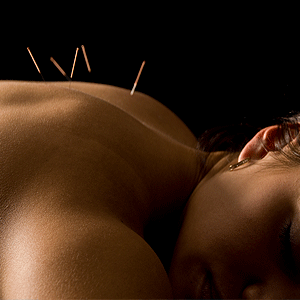
While research has long hinted at the benefits of acupuncture for pain relief, sceptics within the medical fraternity continue to raise questions about the long-term efficacy of this age-old therapy.
Much of the lukewarm response toward acupuncture stems from myth and misunderstanding that surround this ancient healing art, which originated in China over 4,000 years ago.
According to traditional Chinese belief, acupuncture involves activating specific body points to stimulate the flow of QI (energy force) and movement of vital substances (fluid and blood) throughout the body. When the flow of qi and vital substances are obstructed, pain, inflammation and disease occur.
Read: What is acupuncture
The goal of acupuncture is to unblock any obstructions by inserting needles at various places on the body to restore the vital substance and re-balance the body.
Despite its growing popularity – questions about the efficacy of the therapy remain. Detractors of acupuncture claim that the treatments represent nothing more than elaborate placebos and many medical insurance funds refuse to pay for the therapy.
Science and acupuncture.
Supporters of acupuncture look to growing scientific evidence that, when administered correctly, the therapy can alleviate chronic pain in the lower back, neck and knees. It may also help reduce the frequency of tension headaches and prevent migraines.
Studies have also shown acupuncture reduces nausea and vomiting after surgery and chemotherapy. There’s some indication that it may help in terms of weight loss (ear acupuncture seems to work best for weight management), and acupuncture is also commonly used to treat some forms of infertility.
The researchers, who published their results in the Archives of Internal Medicine, found that acupuncture outperformed sham treatments and standard care when used by people suffering from osteoarthritis, migraines and chronic back, neck and shoulder pain. Ultimately, the study found that, at the end of treatment, about half of the patients treated with true acupuncture reported improvements, compared with about 30% of patients who didn’t undergo the therapy.
The meta-analysis included studies that compared acupuncture with usual care, such as over-the-counter pain relievers and other standard medicines. It also included studies that used sham acupuncture treatments, in which needles were inserted only superficially for example, or in which patients in control groups were treated with needles that covertly retracted into handles.
While this study isn’t the last word on the issue, it’s one of the best studies to date and has made a good impression on the medical community.
It should be noted that modern acupuncture, at least methods of acupuncture performed in western countries, are a blend between traditional Chinese medicine and western scientific research, which has led to the treatment becoming a tool in the move toward integrative medicine.
A recent development in the field has seen the use of a new combination of imaging techniques and CT scans (computerised tomography), which has observed concentrated points of micro-vascular structures that clearly correspond to the map of acupuncture points created by Chinese energy doctors nearly 4,000 years ago.
What happens during an acupuncture session?
Acupuncturists insert hair-thin needles into the skin at specific points around the body. It’s virtually painless when done by an experienced practitioner.
Inserting the needles is thought to correct imbalances in the flow of energy in the body, called GI (pronounced “chee”).
For new pain, an acupuncturist shouldn’t be your first option.
It’s best to get a clear diagnosis of what’s causing the pain in order to rule out serious medical conditions, which should be treated right away with mainstream methods – and then to seek out acupuncture if appropriate.
How often is acupuncture needed?
Plan on weekly treatments until you start to see a benefit; then gradually lengthen the time between visits.
What does it cost?
Private medical insurance companies usually don’t pay for acupuncture. Some plans may cover the cost of a physician-acupuncturist. Ask the practitioner about the estimated number of treatments required and how much each treatment will cost.
Who administers it?
A certified acupuncturist. If you decide to visit an acupuncturist, check their credentials. Most countries require a license, certification, or registration to practice acupuncture. However, education and training standards and requirements for obtaining these vary from country to country.
Although a license doesn’t ensure quality of care, it does indicate that the practitioner meets certain standards regarding the knowledge and use of acupuncture.
Read more:
Laser acupuncture for bedwetting
Acupuncture may not help for knee pain
Mixed results for acupuncture for IBS
Image: Woman getting an Acupuncture treatment in a spa from Shutterstock
Sources: United States National Institutes of Health, MedlinePlus, The Pharmaceutical Journal, Australian Acupuncture & Chinese Medicine Association, American Pregnancy Association




 Publications
Publications
 Partners
Partners










